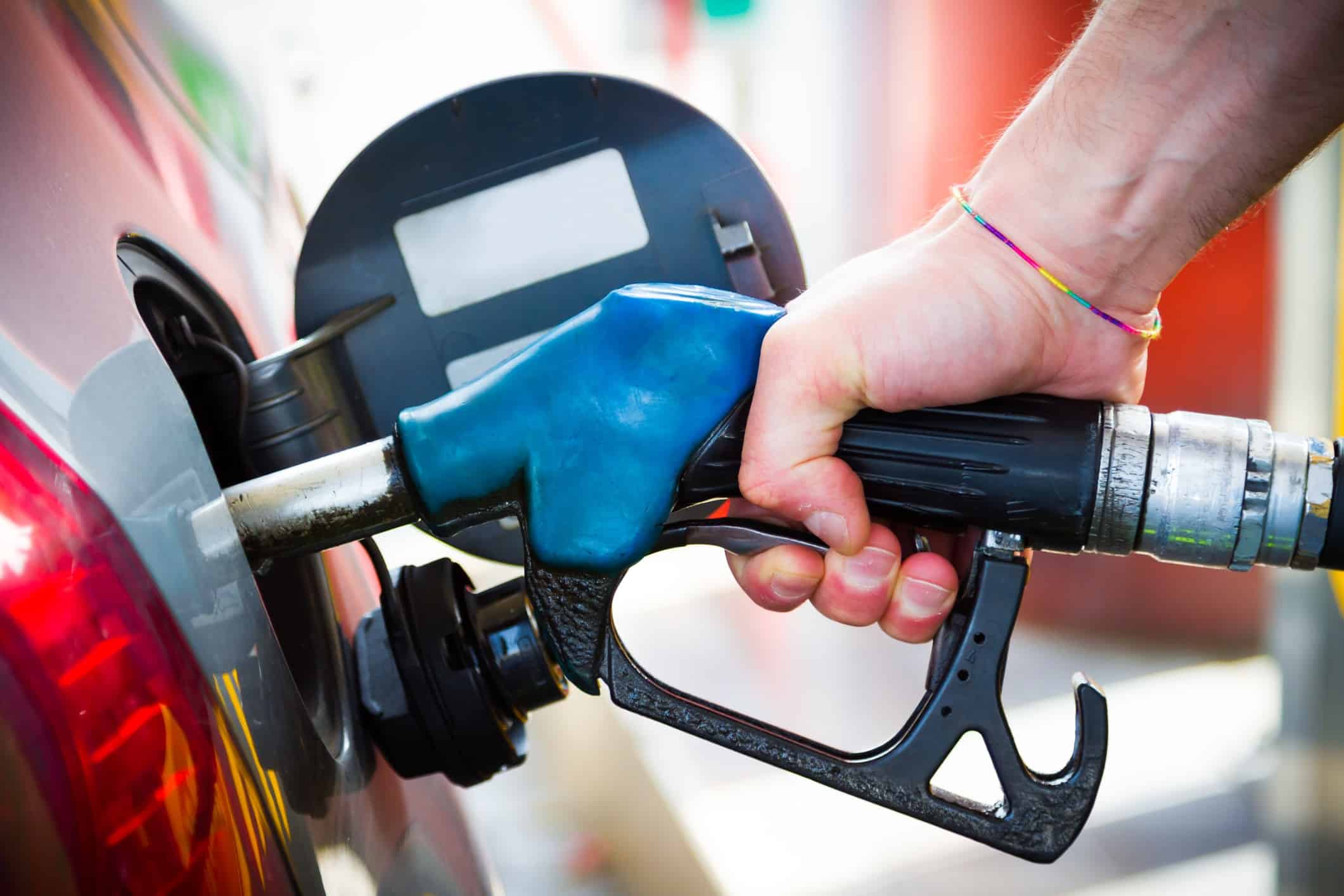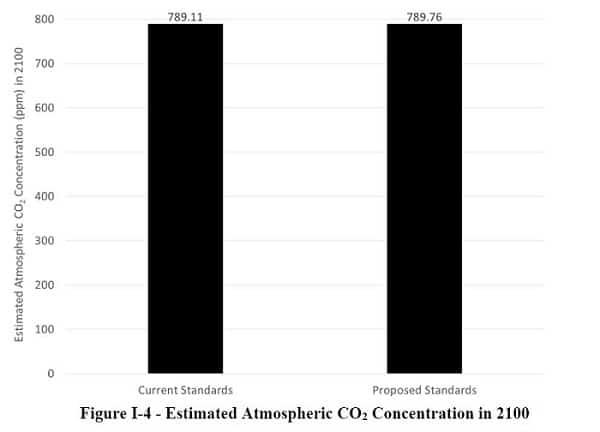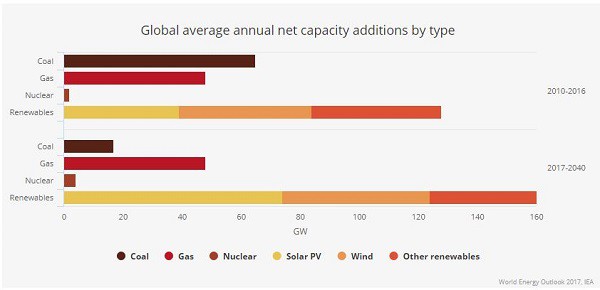Trump Revision of Obama-era Fuel Economy Rules Is No Climate Disaster

 In a recent article in Energy and Environment News, several prominent climate scientists bash the Trump administration’s proposed rollback of the Obama administration’s Corporate Average Fuel Economy (CAFE) and carbon dioxide emission standards for model year 2021-2026 motor vehicles. Their argument, or rather innuendo, is that the Trump proposal is wrongheaded because, well, climate change is bad.
In a recent article in Energy and Environment News, several prominent climate scientists bash the Trump administration’s proposed rollback of the Obama administration’s Corporate Average Fuel Economy (CAFE) and carbon dioxide emission standards for model year 2021-2026 motor vehicles. Their argument, or rather innuendo, is that the Trump proposal is wrongheaded because, well, climate change is bad.
The Environmental Protection Agency (EPA) and National Highway Traffic Safety Administration (NHTSA) are proposing to maintain the Obama administration’s model year 2020 standards through model year 2026. Instead of the CAFE standard for passenger cars rising to 54.5 miles per gallon in 2025, the 2020 standard of 43 mpg would be retained through 2026.
The agencies estimate their proposal would save $250 billion in auto industry compliance costs, $77.1 billion in avoided traffic fatalities, and $120.4 billion in avoided serious injuries. If those estimates are anywhere near the ballpark—indeed, if revising the standards just helps middle-income households afford to buy new motor vehicles—the proposal makes sense, because sticking with the Obama standards would have no discernible climate benefits.
Specifically, under the agencies’ revised standards, atmospheric carbon dioxide concentration would reach 789.76 parts per million in the year 2100 instead of 789.11 ppm—an 8/100th of a percent increase.

Assuming conventional (“consensus”) climate modeling, the extra 0.65 part per million of carbon dioxide would increase global average annual temperature by 0.003°C in 2100. Three one-thousands of a degree Celsius is 27 times smaller than the margin of error (0.08°C) for measuring changes in global average temperature. So, the climate impact of the Trump proposal would literally be undetectable under current scientific methods.
More importantly from a policy standpoint, an unverifiable bump of 0.003°C in global average temperature 82 years from now would make no practical difference to weather patterns, sea levels, polar bear populations, or any other environmental condition people actually care about.
Do the scientists quoted in the E&E News article—Kevin Trenberth (National Center for Atmospheric Research), Ralph Keeling (Scripps Oceanography), Daniel Schrag (Harvard University), Kate Marvel (Columbia University), and Michael Oppenheimer (Princeton University)—challenge the Trump agencies’ prudential judgment that the proposal’s potentially large economic and social benefits outweigh the vanishingly small climate impacts? Not directly, though they speak as if any retreat from the Obama standards is unconscionable because, well, climate change is bad.
Do the scientists challenge the Trump agencies’ calculation that an extra 0.65 parts per million of carbon dioxide would increase long-term warming by only 0.003°C? No, but they suggest that the administration’s calculation is irrelevant because, well, climate change is bad.
Trenberth warns that carbon dioxide concentrations rising to nearly 800 parts per million would devastate the planet: “By mid Century, food and especially water shortages will likely become so widespread that regional conflicts and environmental refugees will dwarf anything we see now, and hence it is not really livable for all humans.”
Schrag, for his part, opines that “billions of individuals” could “suffer terribly” in a world where carbon dioxide emissions reach 800 ppm.
Marvel calls an 800 ppm emission scenario “horrifying,” resulting in a meter of sea-level rise.
Oppenheimer says it is “highly doubtful” humans “would thrive in such a world, reached in a mere century.”
Well, we’ve heard such alarms for years, and although the Intergovernmental Panel on Climate Change (IPCC) says greenhouse gas emissions have been the dominant cause of global warming since the mid-20th century, our chiefly fossil-fueled civilization has become healthier, wealthier, and more peaceful over the past 70 years. The greatest threats to health, welfare, and safety remain the age-old scourges of poverty, preventable disease, and tyrannical governments.
Keeling faults the Trump agencies for “assuming that the world is going to be burning more than twice as much fossil fuel in 80 years than it is burning now, so not only are we not cutting emissions, we’re just continuing to grow them.” However, that assumption is baked into the “baseline” or business-as-usual emissions scenario the Trump agencies inherited from the Obama administration—a “representative concentration pathway” known as RCP8.5.
RCP8.5 was the Obama EPA’s favorite baseline emission scenario, as it is for the Natural Resources Defense Council and numerous other climate advocacy organizations. Why? Because it is very close to being a worst-case emissions scenario. For example, RCP8.5 assumes coal increasingly dominates global electricity markets through the end of the 21st century—as if the U.S. fracking boom and consequent switch from coal to gas as an electricity fuel had never happened.

In the International Energy Agency’s more realistic forecast (below), investment in coal generation decreases as investment in gas and renewable generation increases through 2040.

The Trump agencies also inherited the Obama EPA’s climate policy impact calculator, a model appropriately called MAGICC. The Trump agencies’ estimate of an additional 0.003°C of warming in 2100 is pure MAGICC applied to the 0.65 parts per million increase in atmospheric carbon dioxide concentration calculated from the RCP8.5 baseline.
In short, the Trump agencies’ methodology is exactly what’s required to provide a genuine apples-to-apples comparison between the current and proposed standards with respect to their effects on emission concentration and average global temperature. Had EPA and NHTSA shunned RCP8.5 and MAGICC, climate campaigners would bash the agencies for “cherry picking” baselines and models.
The Trump agencies’ proposed revision of the Obama administration fuel economy and carbon dioxide motor vehicle standards is climatologically irrelevant. No one should know that better than the five scientists quoted by E&E News. Yet they won’t fess up to it even while discussing the agencies’ climate impact estimates. That smacks of partisan bias—an all-too-common trait among climate scientists. If they want to understand the enduring appeal of climate skepticism, they need only look in the mirror.